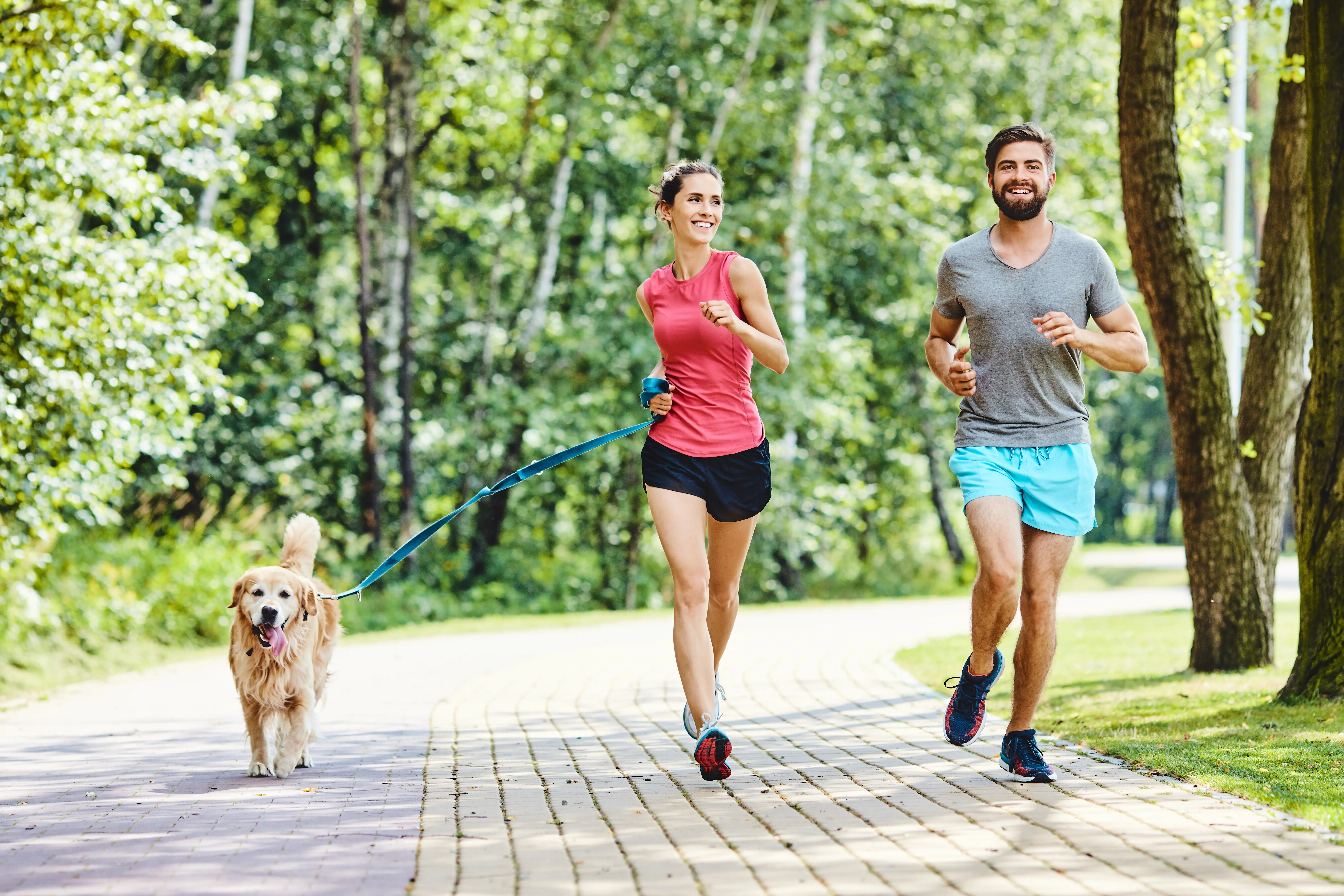From woofs to workouts: Unleashing fun and fitness with your furry friend
23rd June, 2023

Working out is so much better when you have a buddy to motivate you. And what better partner is there than your dog? Dogs make great workout buddies and there are tons of ways you can exercise with your dog by your side, so can both stay fit and healthy.
Benefits of exercising with your dog
Exercising with your dog might motivate you to work out, which is a huge bonus and since your dog is relying on you for their daily workout, you will be able to get into a consistent routine.
Workouts to do with your dog
There are lots of things you can do with your dog so you can both get more exercise, including:
- Walking
- Running
- Yoga
- Hiking
- Swimming
- Agility training
- Biking
- Fetch
Tips for exercising with your dog
Here’s what you need to know to start working out with your dog.
Talk to your vet
Talk to your vet before starting a new workout with your pup, especially if they have any medical conditions that could make exercising more difficult for them, like arthritis.
Pick the right workout
Choose a workout routine that suits your dog’s level of fitness. For example, a bulldog will not be a good running buddy because of their short legs, but a more high-energy dog will probably love running with you.
Senior pups or dogs with health conditions may need more low-key workout routines, so you should take this into consideration when picking out exercises to do, too.
If you have a less active dog, some exercises you can do with them include going on walks, playing fetch, obedience training and letting them play with friend’s dogs.
Avoid hot weather
If you’re going to be exercising outside, only do it mild in weather since dogs can easily get overheated in hotter temperatures. If you’re working out in the summer, bring lots of water, keep your sessions short and look out for signs that your dog is getting too hot.
Before you start running with your dog
- As with any new exercise, if you’re new to running then have a chat with your doctor before you get started.
- Leave at least two hours after your dog has had a meal to avoid any stomach problems caused by exercising too soon after food.
- Younger dogs should not be given too much vigorous exercise. Their bones are still growing, and, if put under too much stress, they may experience problems in later life. Your dog should be fully grown before running alongside you.
- Make sure your dog does not pull-on the lead and their recall is good so that you are confident they’ll listen to you when you’re out and about.
- Find the right routes. Dogs don’t have the advantage of trainers. If you’re running on tarmac, they could be prone to impact injuries, plus it can be very abrasive. Grass and dirt trails are good, and sand or woodchip are also better.
Starting running with your dog
There are some key things to consider when beginning to run with your dog
- Take it easy at first and build up slowly to avoid injury. Alternate between running and walking and run for short distances initially.
- If your dog is unfit, run at their pace, give them plenty of breaks and allow them to stop when they want. Give them plenty to drink and gradually increase your distance over time.
- Watch your dog’s body language. If they show signs of struggling to keep up or not wanting to run, stop straight away to give them a rest.
- If your dog doesn’t enjoy it, don’t force them to continue.
- Make sure they have some fun playtime and plenty of opportunities to sniff during the day too. A run should not be your dog’s only enjoyment.
Dog gear for running
It’s likely that some of your run will be with your dog on lead, so there’s some important equipment that you’ll need to keep your dog safe:
- Lead- make sure you’re never pulling your dog along and that the lead is not interfering with their movement or breathing
- Dog harness- instead of attaching your lead to their collar, use a well-fitting harness as this is often more comfortable for your dog if they occasionally pull or you have to stop suddenly. Some harnesses can interfere with a dog’s movement and rub, so make sure you do your research and get the correct one for your pet.
- Waist belt- if suitable, you can attach a lead to this belt rather than holding it.
- Camel pack- this holds enough water to make sure you and your dog stay hydrated.
- Folding dog bowl for water
- Flashing collar if you’re running in the dark
- Poo bags
If you’re looking for a new exercise buddy to motivate you to work out, your dog might be the perfect partner. Just find a workout that’s right for your pup’s fitness level, and you and your pup will be having fun and staying healthy in no time.
Helpful Pages
Recent Posts
Pet Insurance Quote
- 98% claims paid *
- Claims paid directly to vets
- 24/7 vet video consultations
- Interest free monthly payments




